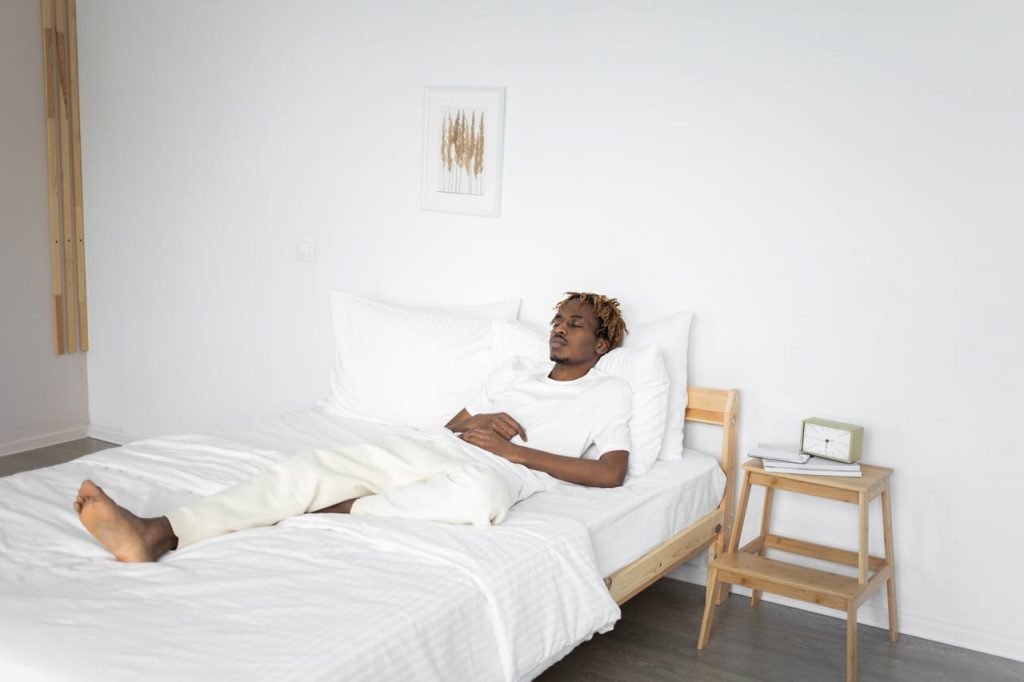
Sleep is one of the most natural things we do, yet so many people struggle with it night after night. While stress, screen time, and inconsistent routines are common culprits, one major factor often goes unnoticed: the bedroom environment itself. The space meant to restore and recharge may be doing just the opposite.
If you regularly toss and turn, wake up groggy, or struggle to fall asleep, it’s worth looking around the room. From lighting and layout to mattress quality and air flow, your bedroom might be quietly working against you. The good news? A few simple changes can make it a sanctuary for deep, consistent rest.
1. Light: The Silent Disruptor
Light plays a powerful role in regulating your body’s internal clock, or circadian rhythm. Even small amounts of light—street lamps, digital clocks, or phone notifications—can suppress melatonin, the hormone that helps you sleep. If your bedroom isn’t dark enough, your brain may stay in “day mode” far longer than it should.

Fix it: Invest in blackout curtains to block outside light. Remove or cover small LED lights on electronics. Avoid overhead lighting in the hour before bed—opt for soft, warm bedside lamps instead.
2. Temperature: Cooler Is Better
Many bedrooms are either too warm or too stuffy for optimal sleep. Your body temperature naturally drops during sleep, and a room that’s too hot can interfere with this process, causing restlessness and shallow sleep.
Fix it: Keep the room between 60–67°F (15–19°C) at night. Use breathable bedding made from natural fibers like cotton or wool. If your mattress traps heat, consider switching to one made with temperature-regulating materials—like those used by Avocado.

3. Noise: Not All Sounds Are Equal
Even if you don’t wake up fully, sudden or irregular noises can pull you out of deeper sleep stages. This includes traffic sounds, loud neighbors, or even a snoring partner.
Fix it: Use white noise machines or apps that provide consistent sound masking. Consider earplugs if you’re a light sleeper. Thick rugs, curtains, or upholstered furniture can also absorb sound and make the space feel calmer.
4. Clutter: A Hidden Source of Stress
A messy bedroom may not seem like a big deal, but visual clutter can subtly signal the brain that there’s unfinished work or disorganization. This can keep your mind in a mildly alert state, making it harder to fully relax.
Fix it: Simplify. Remove unnecessary furniture, store things out of sight, and keep surfaces like nightstands or dressers clear. A minimalist space often encourages a more restful state of mind.
5. The Bed Itself: Comfort Is Non-Negotiable
You spend nearly a third of your life on your bed, yet many people settle for mattresses that sag, overheat, or fail to support the body correctly. Poor spinal alignment or pressure points during sleep can lead to morning aches—and interrupted sleep cycles throughout the night.

Fix it: Your mattress should support your natural posture while providing enough cushion to relieve pressure. A mattress made from high-quality, natural materials—like those offered by Avocado—can reduce chemical exposure and improve overall sleep quality. If you wake up with stiffness or feel more tired than when you went to bed, it might be time to upgrade.
6. Scent, Texture & Energy
A calming bedroom isn’t just about the big pieces—it’s also about subtle cues. Harsh synthetic scents or scratchy bedding can create tension, while soft textures and gentle aromas encourage relaxation.
Fix it: Use essential oils like lavender or eucalyptus in a diffuser. Choose organic sheets and blankets that feel good on the skin. If possible, keep electronics to a minimum—bedrooms filled with buzzing devices or work-related clutter send mixed messages to the brain about what the room is for.

Build a Space That Supports You
Your bedroom isn’t just a place to crash at the end of the day—it’s a crucial part of your mental and physical recovery system. A well-designed sleep environment works with your body, not against it. It sends the message that this space is safe, calm, and meant for restoration.
Small shifts—like adjusting the light, decluttering, or replacing a worn-out mattress—can lead to big improvements in how you feel when you wake up. Many people who’ve made the switch to Avocado mattresses report not just better sleep, but better mornings. And in the long run, better mornings mean better days.
Last modified: September 1, 2025








